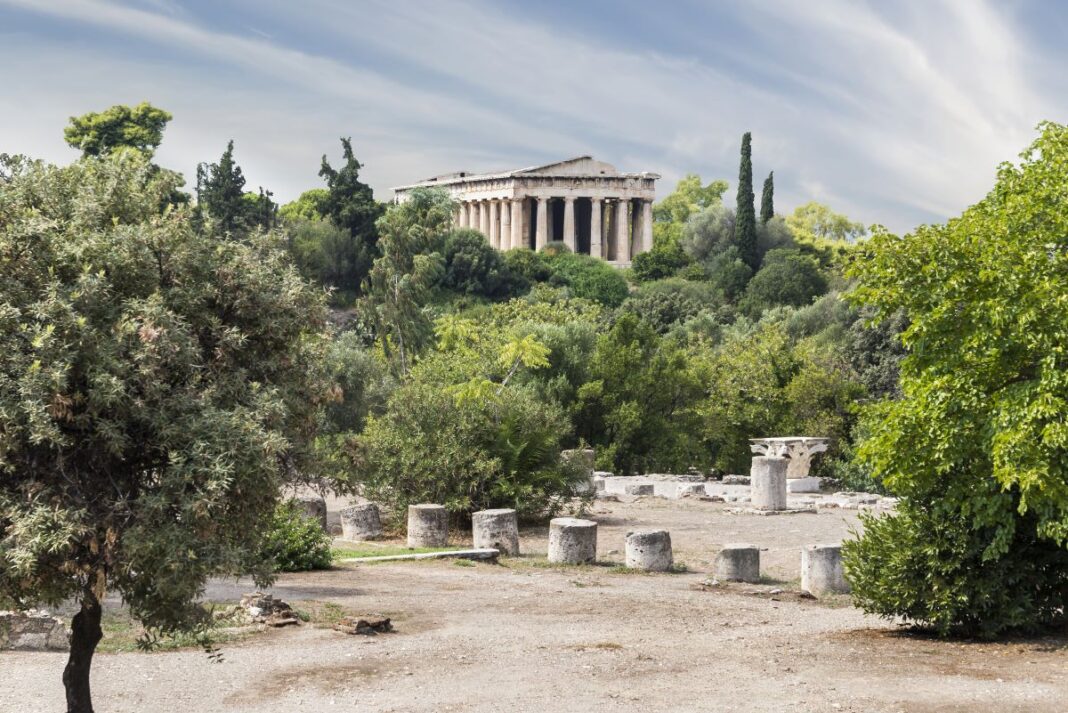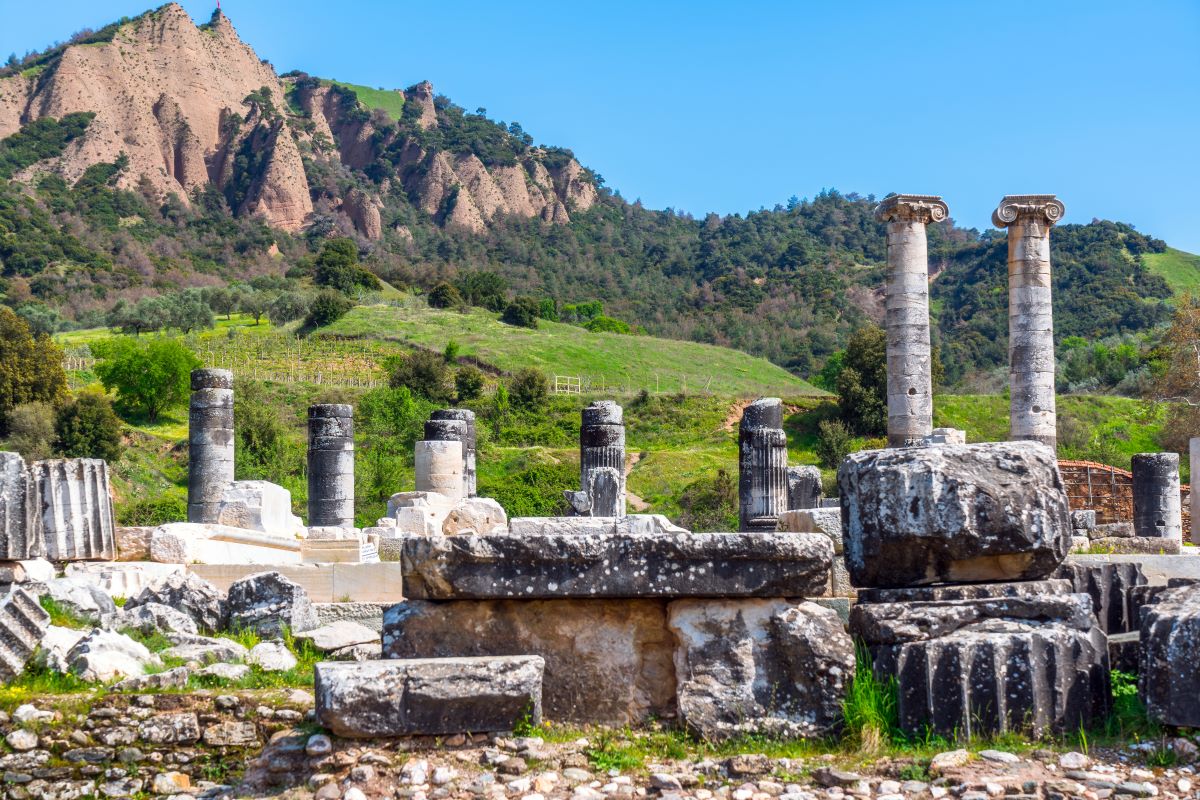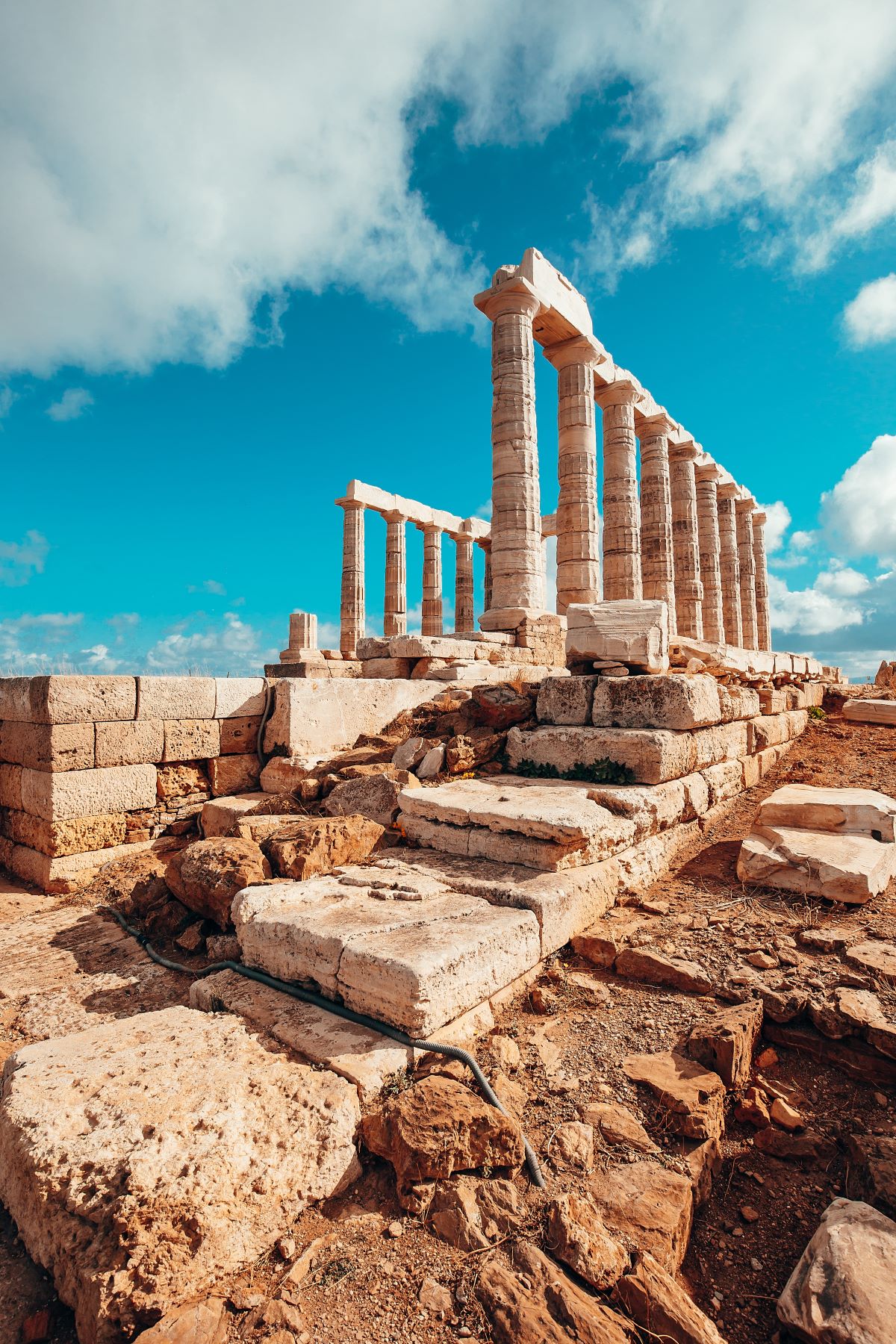The famous Ancient Greek geodetic triangulation remains one of the many wondrous mysteries of our ancestors, a well hidden secret that stubbornly refuses to reveal its traces.
While the history of ancient Greece looks like a bulky volume of geometry and harmony of numbers, the mapping symmetries of ancient scientists continue to pose a challenging question for the world community and the wisdom of ancient Greeks exceeds the wildest imagination.
According to the principles of geometric triangulation, termed geodesy by Herodotus, most of the sacred temples, altars, theatres and monuments built in the antiquity, appear to be interconnected by means of geometric shapes, which are mainly characterized by isosceles and equilateral triangles. Alternatively, they are examples of complex mathematical relationships.
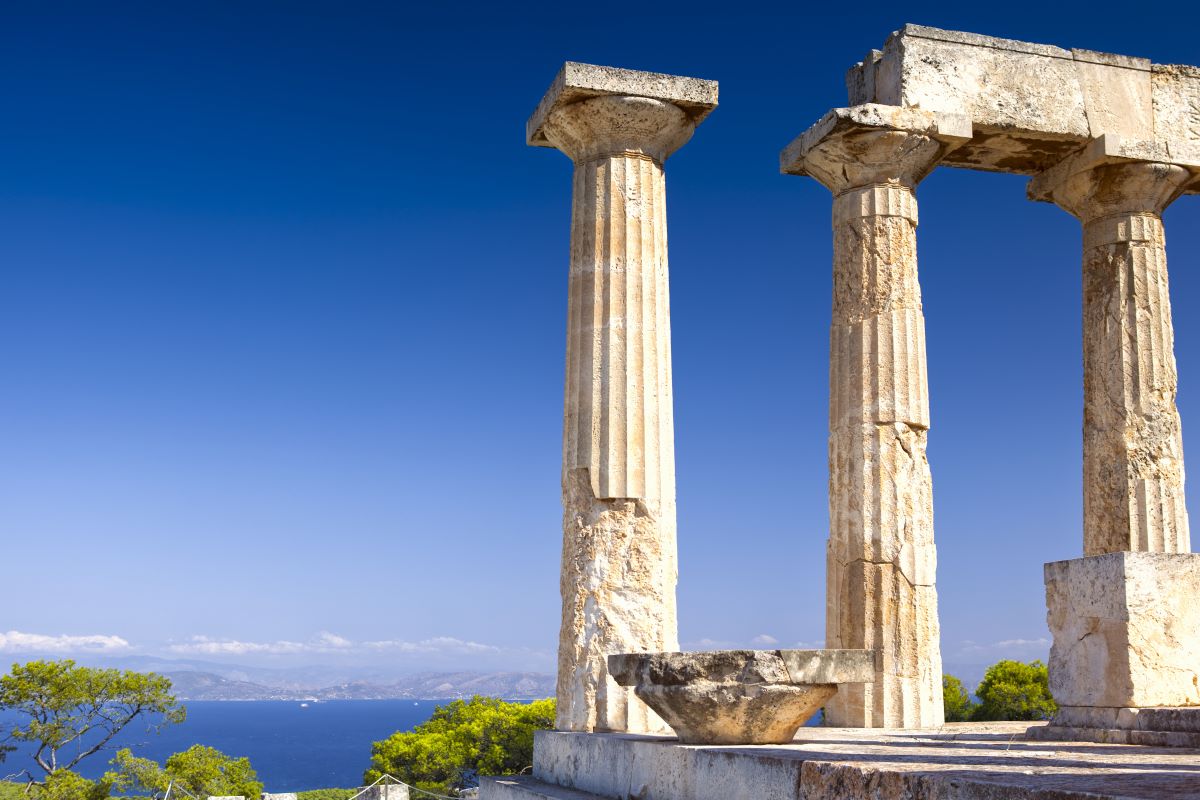
In fact, these sacred places do not just form perfect geometric triangles, but are positioned in places where the earth’s electromagnetic energy is stronger. Thus, the ancient temples were built in such a way so as to make the most of the beneficial effects of that radiation and weaken the harmful ones.
The best known case of geodetic triangulation is the isosceles triangle formed by the Temple of Poseidon in Sounion, the Temple of Hephaestus in Athens and the Temple of Aphaia Athena in Aegina, with a distance of 242 stades from one temple to the next (the head of the triangle being the temple in Sounion). Equally, in the wider area of Attica and Boeotia there are another 23 pairs of ancient cities that also stand 242 stades apart.
The second, also notorious isosceles triangle, features the Temple of Apollo in Delphi at the top and at the two sides the Temple of Aphaia in Aegina and the Parthenon. Other triangles feature the Temple of Delphi, also known as the navel of the earth, at the top and they are connected with Athens and Olympia, Elefsina and Iolkos, Ideon Andron in Crete and Izmir in Turkey.
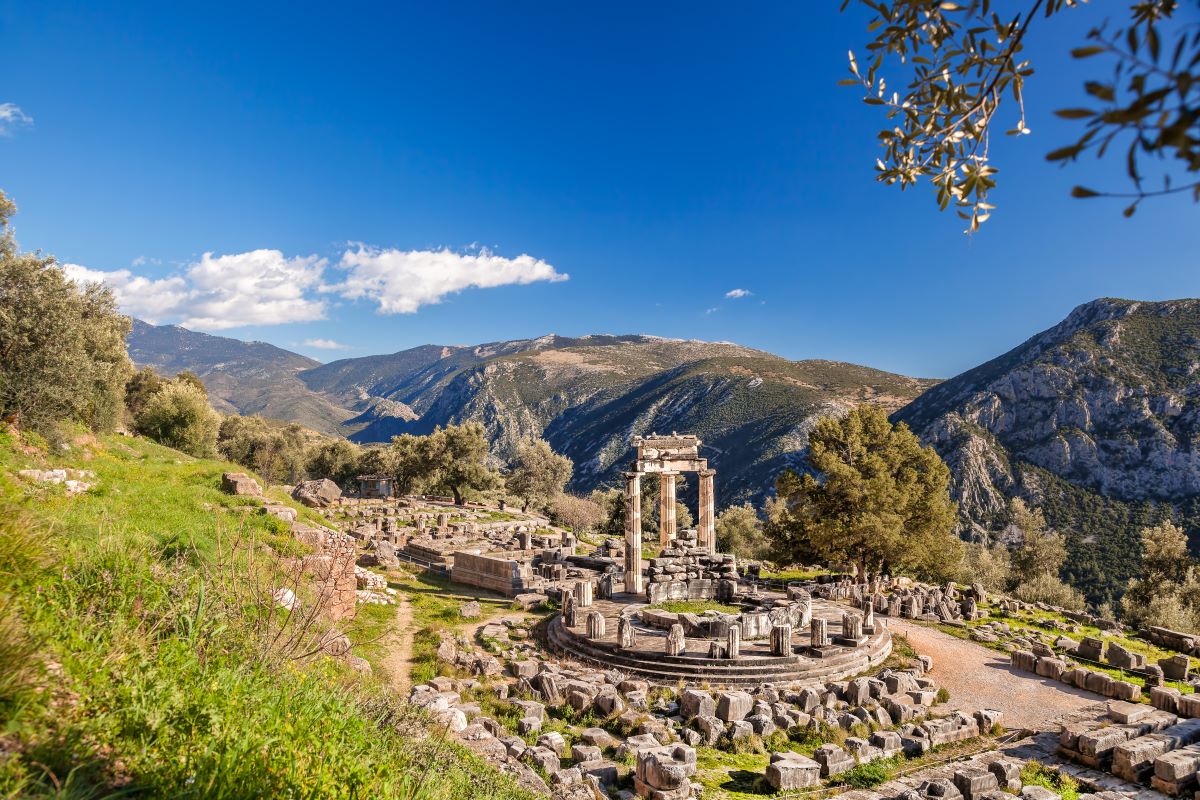
From the Acropolis of Athens, Aigai, ancient Olympia, the Lions of the sacred island of Delos, the Temple of Apollo in Delphi and ancient Thebes and all the way to Dion, the Temple of Apollo in Corinth, the Temple of Poseidon in Isthmia, the Temple of Poseidon in Sounio, the Lion of Chaeronia and the Temple of Artemis in Ephesus, the geometric relations recorded by Greek topography are countless.
The units of measurement used by the ancient Greeks were the stade (184.454 meters), the π (3.14), the φ, namely the unit of the golden ratio (1.618), but also various geometric ratios known to ancient Greeks such as 1: 1, 3: 2, 4: 3 , 9: 8, 256: 243, 8: 3, 4: 1, 9: 2, etc.
With the help of modern satellite technology, which confirms – with a deviation of only a few dozens of meters – the practice of triangulation in ancient Greece, it has become evident that our ancestors knew how to build cities and temples in absolute harmony.
Using GPS and geocoordinates that simplified calculations, Professor Kosmas Markatos carried out measurements at temples and sacred places around Greece and revealed that the isosceles triangle was probably the unit of geodetic triangulation, although other standards were also used, such as the principle of equal distances between archaeological sites, the rectangle, the equilateral and the golden triangles, the circle, the alignment, etc.
But why did the ancient Greeks build their places of worship in this way? What was the point of this sacred arrangement and how did they manage to calculate the huge distances, let alone in cases where the sea came between the different locations? This is a series of unanswered questions that still trouble the minds of the scientific community.
Amidst a havoc of different views and conspiracy theories, some claim that the Ancient Greeks used binoculars to determine the positions according to the stars, in an attempt to depict the glorious constellations on earth. Others believe that everything was calculated in an absolutely mathematical and harmonious manner or that the Ancient Greeks used the natural energy currents of the earth’s surface to direct the energy to the cities and temples. Also, there are theories supporting that the ancient gods were in fact older or even extraterrestrial civilizations, which transferred their know-how to our ancestors and constructed those masterpieces.
The ancient Greeks used the natural energy currents of the earth’s surface to direct the energy to their cities and temples.
Back in 1967, the harmony of the imaginary interconnection of the ancient Greek temples fascinated the French researcher Jean Rissen, who, referring to the “Ancient Geometric Triangulation”, tried to determine in practice whether the ancient Greeks were really “playing” mathematical games on the map. Then, Dr. Theofanis Manias, a pioneer in the research on sacred geometry in ancient Greece, began to study the internal mathematical and astronomical harmony of ancient Greek monuments. Holding the rank of Air Commodore, Manias identified this phenomenon by studying the pilots’ logbooks. Over the years, he noticed that the fuel needed to cover distances in a triangular shape was the same. Studying maps of Greece and charting the routes of aircrafts, he found that those triangular relations consisted of specific Ancient Greek sacred places.
Many philosophers verified that the establishment of the sanctuaries was not random, but followed an inner regulation true to its own occult methodology. As Aristotle characteristically states in Politics: “the established houses for the worship of gods must be located not only in the appropriate place but also in the same, except those whose position is separately defined by the Law or some oracle under the auspices of the oracle of Delphi.” Hipparchus agrees to this claim when he states that he used geodetic methods to determine any point on Earth. Strabo also says that “those involved in the positioning of the various places take into account data provided by astronomers and geometers which have to do with shapes, sizes and distances.” Meanwhile, Pausanias writes that: “The deme of Marathon is as far away from Athens as Karystos, in Evia, is from Athens “(“Attica” 32: 3), while according to Plato’s Timaeus, the tangible world, the world we can see and sense, is an exact copy of the celestial plan, following ratios and symmetries and the harmony of numbers.
The fact that the cases of geodetic triangulation on the map of Greece and beyond are innumerable could in no way belong to the realm of chance, painting a picture of awe-inspiring conception of colossal proportions. This picture reverently follows the universal and antediluvian law of harmony, highlighting once again the scientificity and mystical knowhow of one of the most brilliant cultures of our planet.


